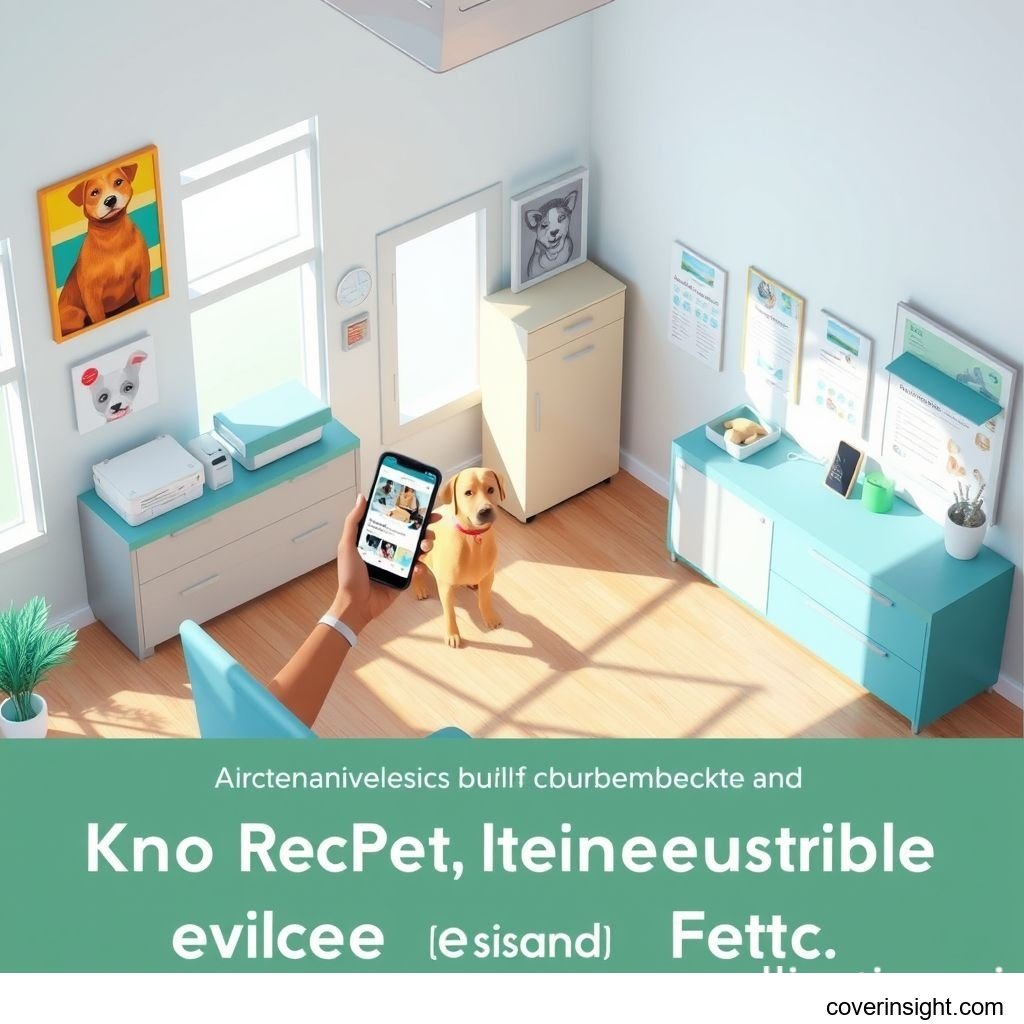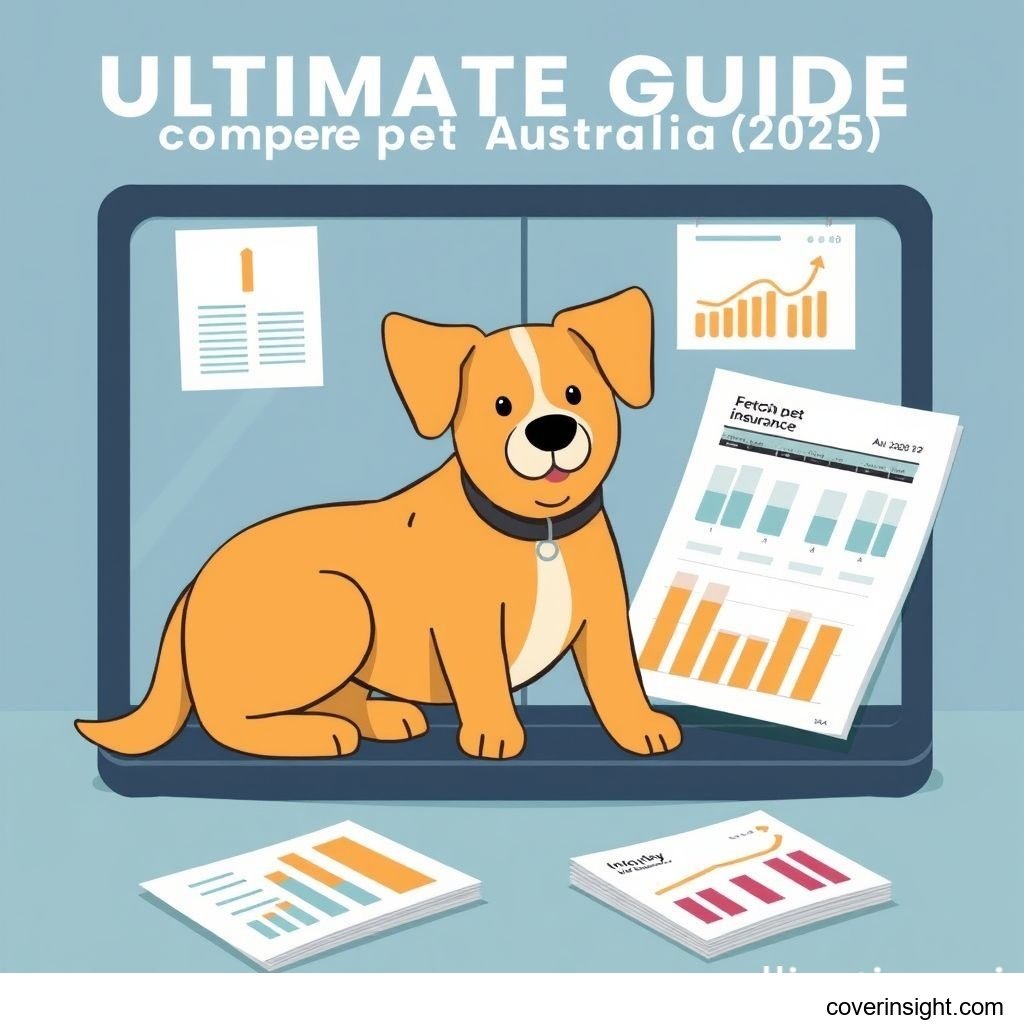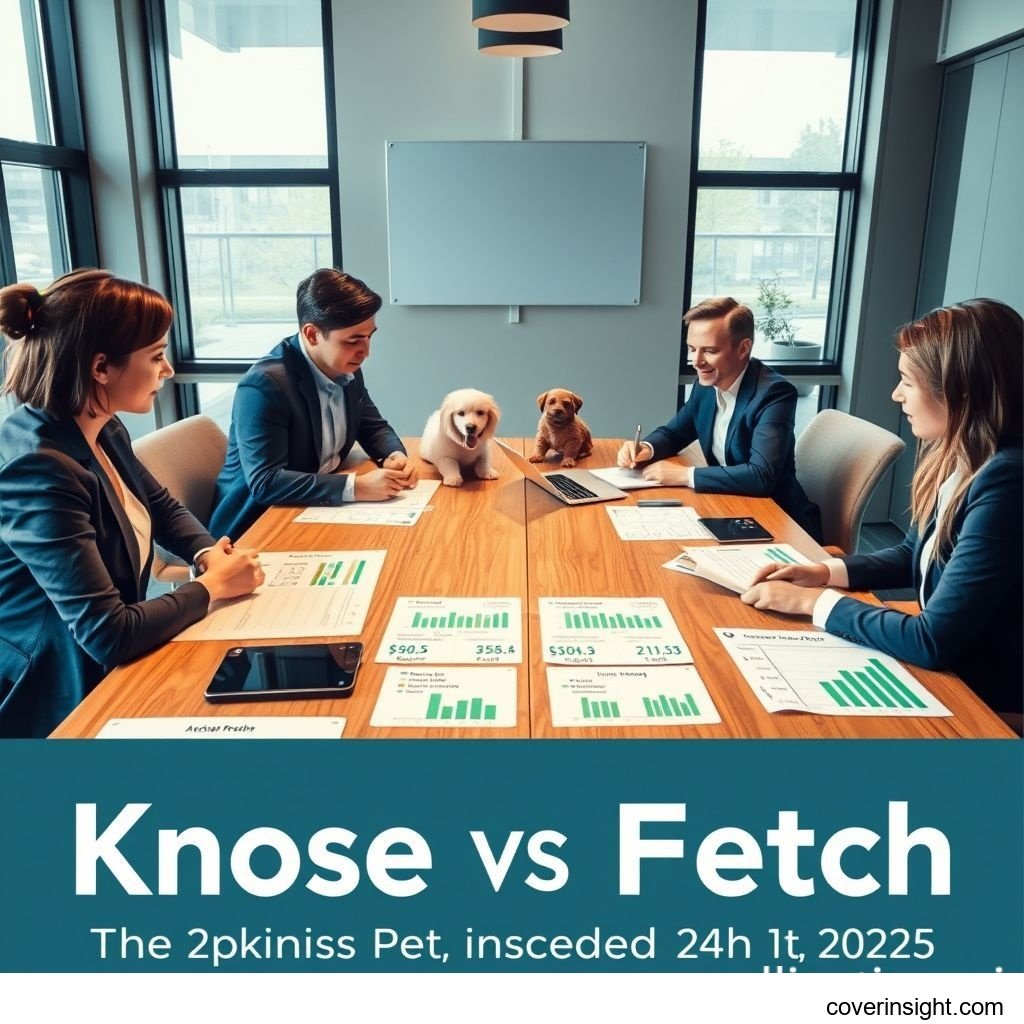Introduction
Choosing the right pet insurance for your beloved companion is a significant decision for Australian pet owners. As we look towards 2025, understanding the nuances of available policies becomes more critical than ever. This comprehensive knose pet insurance review aims to provide an in-depth comparison between two prominent players in the Australian market: Knose and Fetch. Our goal is to equip you with the knowledge to make an informed choice, ensuring your pet receives the best possible care without unexpected financial burdens. A thorough knose pet insurance review is essential for any pet owner navigating the complexities of veterinary costs and policy benefits in Australia.
Knose Pet Insurance: A Deep Dive
Knose has emerged as a flexible option for many Australian pet owners, offering policies designed to be adaptable. Their approach often focuses on customisation, allowing pet parents to tailor coverage to their specific needs and budget. This focus on personalisation is a key aspect often highlighted in a knose pet insurance review.
Knose Coverage Features
Knose offers a variety of plans, primarily focusing on comprehensive coverage for unexpected illnesses and injuries. They aim to simplify the process, making it easier for pet owners to understand what they're covered for.
-
Accident & Illness Plans: These are their core offerings, covering a wide range of veterinary treatments for unforeseen accidents (e.g., broken bones, poisoning) and illnesses (e.g., infections, diabetes).
-
Optional Wellness Add-ons: While not always standard, Knose may offer optional add-ons for routine care, such as vaccinations, worming, and annual health checks. This allows for a more holistic approach to pet health management.
-
Coverage Limits: Policies typically come with annual limits, ranging from moderate to high, allowing you to choose a level that matches your comfort with potential out-of-pocket expenses.
-
Reimbursement Rates: Knose generally offers several reimbursement rate options, usually 70%, 80%, or 90%, allowing you to select how much of the eligible vet bill they will cover after your excess.
Knose Pros and Cons
Like any insurance provider, Knose has its strengths and weaknesses, which are important considerations in any knose pet insurance review.
Pros:
-
Customisable Policies: High degree of flexibility in choosing excess, reimbursement rate, and annual limits.
-
Online Focus: User-friendly online platform for quotes, claims, and policy management.
-
Potential for Multi-Pet Discounts: Often offers discounts for insuring multiple pets under the same policy.
-
Transparent Language: Aims to use clear, understandable terms, reducing confusion about coverage.
Cons:
-
Pre-existing Conditions: Standard exclusions apply to pre-existing conditions, which is common but can be a point of frustration for some.
-
Waiting Periods: Standard waiting periods apply before certain conditions are covered (e.g., illness, cruciate ligament conditions).
-
Age Limits: Older pets might face limitations on the types of policies available or higher premiums.
Fetch Pet Insurance: What You Need to Know
Fetch Pet Insurance (formerly known as Petbarn Pet Insurance) has a strong presence in the Australian market, often associated with a well-known pet retail brand. They position themselves as a reliable option with straightforward policy offerings.
Fetch Coverage Options
Fetch typically provides a range of plans designed to cater to different needs and budgets, from basic accident coverage to more extensive illness and accident options.
-
Accident Only Plan: Covers unexpected injuries from accidents, offering a basic level of financial protection.
-
Accident & Illness Plans: Comprehensive plans that cover both accidents and a wide array of illnesses, including consultations, diagnostics, surgery, and medication.
-
Routine Care Add-on: Fetch often provides an optional add-on for routine care expenses, similar to Knose, helping with preventative health costs.
-
Variable Benefit Limits: Their plans usually come with different annual benefit limits, allowing you to choose the maximum payout for your pet's treatment.
Fetch Benefits and Drawbacks
Understanding the unique aspects of Fetch helps in a balanced comparison with a knose pet insurance review.
Benefits:
-
Brand Recognition: Backed by a reputable pet retail brand, which can instill confidence.
-
Flexible Options: Offers different tiers of coverage, from basic to comprehensive, to suit various budgets.
-
Online Claiming: Streamlined online claims process for convenience.
-
Potential Member Discounts: May offer additional benefits or discounts for existing Petbarn or Greencross Vets customers.
Drawbacks:
-
Potentially Higher Premiums: Some comparisons suggest Fetch premiums can be slightly higher for similar coverage levels compared to other providers, though this varies greatly by individual circumstances.
-
Standard Exclusions: Like Knose, they apply standard exclusions for pre-existing conditions, elective procedures, and some preventable diseases.
-
Customer Service: While generally good, some online reviews occasionally highlight areas for improvement in claims processing times.
Coverage Details
A critical part of any knose pet insurance review involves a detailed look at what is and isn't covered, and how different providers handle specific conditions.
What’s Included
Both Knose and Fetch, in their comprehensive plans, generally cover a wide range of veterinary treatments for unexpected accidents and illnesses.
-
Accidental Injuries: Fractures, burns, snake bites, poisoning, car accidents.
-
Illnesses: Infections, skin conditions, cancer, diabetes, arthritis, gastrointestinal issues.
-
Diagnostic Tests: X-rays, ultrasounds, MRI, CT scans, blood tests.
-
Surgeries & Procedures: Anaesthesia, hospitalisation, specialist referrals.
-
Medication: Prescription drugs administered by a vet.
-
Emergency Consultations: Vet visits for urgent medical attention.
For comprehensive plans, owners can expect support with:
- Specialist veterinary treatment fees.
- After-hours emergency care.
- Prescription medications for covered conditions.
- Advanced diagnostic imaging.
- Physiotherapy and hydrotherapy (often with limits).
Common Exclusions
Understanding exclusions is just as important as knowing what's included. These apply broadly across most pet insurance policies in Australia, including both Knose and Fetch.
-
Pre-existing Conditions: Any illness or injury that showed signs or symptoms before the policy's start date or during the waiting period. This is the most common reason for denied claims.
-
Elective Procedures: Cosmetic surgeries, tail docking, dew claw removal (unless medically necessary).
-
Routine & Preventative Care (unless add-on): Vaccinations, de-worming, flea control, routine check-ups, dental cleaning (unless for injury/illness).
-
Behavioural Issues: Training or treatment for behavioural problems unless directly caused by a covered illness or injury.
-
Breeding & Pregnancy: Costs associated with pregnancy, birth, or breeding.
-
Dental Illness: Unless specified or directly resulting from an accident, general dental disease is often excluded.
-
Experimental Treatments: Procedures not considered standard veterinary practice.
Chronic Condition Coverage Explained
When assessing a pet insurance policy, especially in a knose pet insurance review, chronic condition coverage is a crucial factor. A chronic condition is an ongoing illness that requires continuous or recurring treatment, such as diabetes, arthritis, or certain allergies.
-
Knose: Knose generally covers chronic conditions provided they did not show signs or symptoms before the policy's inception or during the applicable waiting periods. Once covered, the condition will typically be covered for the lifetime of the pet, subject to annual limits and policy terms.
-
Fetch: Fetch also offers
chronic condition coveragefor eligible illnesses that arise after waiting periods. Similar to Knose, ongoing treatment for these conditions would be covered year after year, provided the policy remains active and within annual limits.
Key Considerations for chronic condition coverage:
-
Annual Limits: While covered, treatments for chronic conditions contribute to your annual benefit limit. A pet with a severe chronic condition might exhaust this limit quicker.
-
Lifetime Cover: Ensure the policy explicitly states "lifetime cover" for chronic conditions, meaning the condition isn't suddenly excluded after one year of treatment.
-
Waiting Periods: Be aware of specific waiting periods for certain conditions, which can impact when a chronic condition might first be eligible for coverage.
Accident-Only vs Comprehensive Plans Compared
Understanding the difference between accident-only vs comprehensive plans is vital for choosing the right level of protection for your pet, a key part of any good knose pet insurance review.
-
Accident-Only Plans:
-
Focus: Solely covers costs associated with accidental injuries (e.g., poisoning, car accidents, fractures).
-
Cost: Generally the most affordable option.
-
Best for: Pet owners on a tight budget who want some protection against sudden, high-cost emergency treatments but are willing to cover illness-related costs themselves.
-
Knose & Fetch: Both typically offer an accident-only option, providing a basic safety net.
-
-
Comprehensive Plans (Accident & Illness):
-
Focus: Covers both accidental injuries AND a wide range of illnesses (e.g., infections, cancer, diabetes, allergies). This is the most popular choice.
-
Cost: Higher premiums than accident-only plans due to broader coverage.
-
Best for: Pet owners who want extensive financial protection against most unexpected veterinary costs, ensuring peace of mind for both accidents and illnesses.
-
Knose & Fetch: Both providers excel in this category, offering multiple tiers within their comprehensive plans to suit different needs regarding annual limits and reimbursement rates. This is where most of a knose pet insurance review will focus its attention.
-
Choosing between accident-only vs comprehensive depends entirely on your financial comfort level and your pet's risk profile. Comprehensive plans offer far greater peace of mind.
Cost Analysis
The cost of pet insurance is a primary concern for most pet owners. A thorough knose pet insurance review must delve into the factors influencing premiums and provide cost-saving strategies.
Price Factors
Several variables influence the premium you pay for pet insurance, regardless of whether you choose Knose or Fetch.
-
Pet's Breed: Purebreds are often more expensive to insure due to predispositions to certain hereditary conditions (e.g., hip dysplasia in large breeds, breathing issues in brachycephalic breeds).
-
Pet's Age: Premiums increase significantly as your pet ages, reflecting the higher likelihood of age-related illnesses and conditions. Puppy and kitten insurance is generally cheaper.
-
Location: Veterinary costs vary by postcode. Living in metropolitan areas with higher vet fees can lead to higher premiums.
-
Chosen Policy Type: Comprehensive plans are more expensive than accident-only.
-
Annual Benefit Limit: A higher maximum annual payout will result in a higher premium.
-
Reimbursement Rate: Choosing a higher reimbursement rate (e.g., 90% instead of 70%) means a higher premium.
-
Excess (Deductible): Opting for a higher excess (the amount you pay before the insurer contributes) typically lowers your premium.
Saving Tips
Here are practical tips to help manage the cost of your pet insurance.
-
Start Early: Insure your pet when they are young and healthy. This locks in lower premiums and avoids pre-existing condition exclusions for conditions that develop later.
-
Choose a Higher Excess: If you can afford a larger upfront payment during a claim, selecting a higher excess will reduce your regular premium payments.
-
Consider Lower Reimbursement Rate: If you're comfortable covering a larger percentage of the vet bill yourself, opting for a 70% or 80% reimbursement rate instead of 90% can save on premiums.
-
Pay Annually: Many insurers, including Knose and Fetch, offer a discount if you pay your premium annually rather than monthly.
-
Multi-Pet Discount: If you have more than one pet, check if the insurer offers a discount for insuring multiple animals. Knose is known to offer these.
-
Maintain Good Health: While not directly affecting premiums, preventative care (vaccinations, good diet, regular exercise) can reduce the likelihood of claims, ensuring you get the most value from your policy.
Fetch vs Knose: Premium Comparison
While exact figures vary wildly based on individual pet details, a general comparison of premiums in this knose pet insurance review can offer some insights.
-
Knose: Often positioned as competitive, particularly for its customisable options. The ability to fine-tune the excess, reimbursement rate, and annual limit can allow pet owners to find a price point that suits their budget. This flexibility can make Knose appear more affordable for those willing to adjust their coverage parameters.
-
Fetch: Generally considered a mid-to-higher range provider. Their premiums can sometimes be a bit higher for comparable comprehensive coverage, but this can be offset by potential loyalty programs or specific discounts if you're already a Petbarn/Greencross Vets customer. Fetch's pricing structure might be less granular in customisation compared to Knose, meaning less direct control over premium adjustments via policy settings.
It's always recommended to get direct quotes from both providers for your specific pet to accurately compare costs.
Customer Experience and Claims
Beyond coverage and cost, the ease of making a claim and the quality of customer support are paramount for a positive pet insurance experience. This is a crucial area in our knose pet insurance review.
The Claims Process
Both Knose and Fetch have adopted streamlined digital claims processes, aiming for efficiency.
-
Online Portals: Both offer online portals or apps where you can submit claims by uploading veterinary invoices and clinical notes. This is a significant convenience compared to traditional paper claims.
-
Pre-Approval: For expensive or complex treatments, both typically offer a pre-approval process, allowing you to confirm coverage before the procedure, providing financial certainty.
-
Reimbursement Speed: Reimbursement times can vary. Both companies aim for prompt processing, but factors like claim complexity, completeness of documentation, and bank processing times can influence how quickly you receive your funds. Anecdotal evidence suggests both generally process claims efficiently, though peaks in demand can cause delays.
Customer Support & Reputation
Customer service can make or break an insurance experience, particularly during stressful times.
-
Knose: Often praised for its user-friendly interface and transparent communication. Being a relatively newer, digitally-focused provider, their support is typically accessed via online chat, email, or phone. A knose pet insurance review often highlights their responsive online support.
-
Fetch: As an established player, Fetch has a dedicated customer service team available via phone and email. Their reputation is generally solid, benefiting from the association with Petbarn. Some users report positive experiences with claims, while others occasionally mention slower response times during peak periods.
Checking independent review sites and forums can provide additional insights into real customer experiences with both providers regarding their claims process and overall support.
Conclusion: Which is Right for Your Pet?
The choice between Knose and Fetch ultimately depends on your specific needs, budget, and priorities for your pet's health. Both offer robust comprehensive plans suitable for most Australian pet owners, but their strengths lie in different areas. This final section of our knose pet insurance review aims to guide your decision.
-
Choose Knose if:
-
You value high customisability to fine-tune your premium and coverage limits.
-
You prefer a digitally-forward experience with a strong online presence for claims and policy management.
-
You're looking for competitive pricing, especially if you can leverage their flexibility.
-
-
Choose Fetch if:
-
You prefer a provider with a strong, established brand presence and association with a well-known pet retail chain.
-
You might benefit from existing loyalty programs or discounts through Petbarn/Greencross Vets.
-
You're looking for clear, tiered plans that simplify the decision-making process.
-
Regardless of your choice, obtaining knose pet insurance review quotes from both providers tailored to your specific pet is crucial. Compare not just the premiums, but also:
-
Annual limits and sub-limits: Ensure they meet your expectations for potential large claims.
-
Excess options: Choose one that aligns with your comfortable out-of-pocket contribution.
-
Reimbursement rates: Decide how much of the vet bill you want covered.
-
Specific exclusions and waiting periods: Understand these clearly to avoid surprises.
Investing in pet insurance, whether through Knose or Fetch, is a proactive step towards ensuring your furry family member receives the best possible care throughout their life without placing undue financial strain on your household. For more comprehensive information, consider visiting resources like the Australian Prudential Regulation Authority or the Insurance Council of Australia for regulatory insights. Further explore pet insurance options by visiting Insurance Resources Global. For localised Australian advice, check AU Insurance Home.
FAQs
Here are some frequently asked questions regarding pet insurance in Australia, especially relevant to this knose pet insurance review.
How much does knose pet insurance review cost?
The cost of a knose pet insurance review policy varies significantly. It depends on factors like your pet's breed, age, location, and the specific level of coverage, excess, and reimbursement rate you choose. Generally, you can expect premiums to range from $30 to $100+ per month for comprehensive plans.
What affects premiums?
Several factors impact pet insurance premiums:
-
Pet's age: Older pets are more expensive to insure.
-
Breed: Certain breeds are predisposed to health issues, increasing costs.
-
Location: Vet costs differ across regions.
-
Coverage level: Comprehensive plans are pricier than accident-only.
-
Annual limit, reimbursement rate, and excess: Higher limits/rates and lower excess increase premiums.
Is it mandatory?
No, pet insurance is not mandatory in Australia. It is a voluntary choice for pet owners to help manage the financial risk associated with unexpected veterinary expenses.
How to choose?
To choose the best pet insurance, consider:
-
Your budget: How much can you comfortably pay in premiums and excess?
-
Pet's needs: Does your pet have any breed-specific risks or health concerns?
-
Coverage type: Do you need accident-only, or comprehensive with
chronic condition coverage? -
Reputation: Research customer reviews and claims processing efficiency.
-
Compare quotes: Get personalised quotes from multiple providers, including a detailed knose pet insurance review alongside Fetch.
Consequences of no coverage?
Without pet insurance, you are solely responsible for 100% of your pet's veterinary bills. This can lead to significant financial strain, especially in cases of severe accidents or chronic illnesses that can cost thousands of dollars. It may force difficult decisions regarding treatment options if funds are limited.








Comments